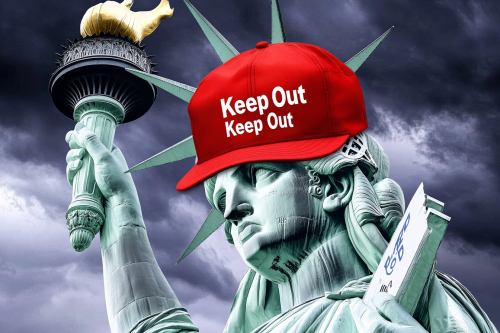Employers applying for L-1 visas to fill managerial and specialist knowledge job vacancies under ‘blanket’ approval are now required to complete a new, longer form that further probes the employment history of potential workers. The new form was introduced on August 29, 2016.
Companies with an approved blanket L-1 visa petition are now required to use an extended version of Form I-129S, which now contains 10 parts over eight pages. The I-129S form enables employers to obtain L-1A or L-1B visas for executive and managerial personnel or workers with ‘specialized knowledge’, allowing for the transfer of staff to business operations based in the US.
Large multinational companies that transfer staff to the US on a regular basis frequently use the L-1 blanket petition option which makes it easier for their personnel to be transferred to the US on an L-1 visa.
Following approval for L-1 blanket filing, a company is no longer required to lodge an application with US Citizenship and Immigration Services using a separate I-129 petition for every potential L-1 employee. Instead, organizations can send L-1 visa applicants directly to US consulates overseas, where adjudication is less stringent.
Key changes to the I-129S form
The key changes to the I-129S form that employers need to be aware of include:
- The requirement for more details concerning a worker’s previous employment and salary received in US dollars
- The requirement to provide a specific percentage of time a transferred member of staff will be carrying out work duties on a daily basis
- Further scrutiny into third-party client workplace scenarios
Sanwar Ali, Editor of workpermit.com News has the following comments to make:
It remains to be seen what will happen in the long term following the introduction of the longer L-1 I-129S forms which have doubled in length from four pages to eight pages. It is an additional burden on employers. It is hoped that the new form will enable better review and adjudication of L-1A and L-1B visa applications under blanket filing based on information provided about previous job titles and yearly salaries provided on the new form.
The usual L-1A and L-1B visa petition requires a considerable amount of documentation to show that both the employer and the employee meet the requirements of the L-1 visa. This is sent in duplicate to the USCIS. There is far less documentation required for an L-1 visa based on blanket filing. There is a danger that too much additional paperwork required for an L-1 blanket filing petition will greatly reduce the benefits of an L-1 visa application based on blanket filing.
L-1 visa blanket petitions face further scrutiny
It’s anticipated that the additional information required on the new I-129S form will be used to further scrutinize applications. Justin Storch, manager of agency liaison at the Council for Global Immigration which is an organisation representing companies and Universities that employ overseas nationals with employs highly educated professionals, said: “The new fields requiring employers to enter detailed employment history information directly on the form, including wages, is likely to lead to more scrutiny for would-be L-1s in a way they have not in the past.”
The changes to the form are in keeping with USCIS guidelines issued last year, which placed more emphasis on wages and language prohibiting ‘labor for hire’ arrangements, according to Storch.
While the majority of new additions to the form are minor, such as requests for the transferee’s gender, maiden name and previous names, other additional information required is more invasive. The form demands new and specific information about the beneficiary’s foreign employment, including job title, start and end dates, job duties, wages, and weekly hours worked.
However, questions have been raised over the requirement to include previous salaries in US dollars on the new form. Macdonald said: “Due to differences in the economies of an applicant’s home country when compared to the United States, a manager’s previous salaries may seem like a low yearly wage and, therefore, not indicative of a managerial-level position within an organization.”
“The same may be true for L-1B specialized knowledge applicants, which could result in an adverse decision against the applicant and company,” Macdonald added.
Third-party placement of L-1 visa workers
Perhaps more concerning for employers will be the questions relating to third-party placements of L-1 visa workers. The use of L-1 and H-1B visa workers for outsourcing purposes has been in the media spotlight in more recent years, with IT companies in particular coming under heavy criticism for recruiting foreign workers at the expense of Americans.
Macdonald said: “Specifically, in cases where the L-1B specialized knowledge applicant will be placed at a third-party worksite, the forms demand that the employer provides the supervisor’s name, the nature of the supervision and control of the applicant’s work, and reasons justifying why the third-party placement is necessary.”
Further to these requirements, employers must give an explanation as to why placing a foreign worker at a third-party workplace is not a ‘labor for hire’ arrangement.
Macdonald said: “Such questions instantly put employers at a disadvantage, while leaving applicants in a precarious situation, having to answer questions on third-party placement issues without any attorney present or ability to reach out for assistance.”
According to Macdonald, the new form places undue pressure on employers and employees to justify third-party workplace arrangements. He warned that applicants face a barrage of questions regarding the nature of their work, who designates their work and why their particular skillset gives them the ‘specialized knowledge’ to do the job in question.
According to Macdonald, the modified version of the form could potentially improve the review process, eliminating or reducing the inconsistencies associated with the past system. He said: “By providing more detailed information to the consular officer in advance of the interview, it’s hoped that a more consistent review process will emerge and more positive results will occur across US consulates.”
“Currently, the system is plagued with inconsistencies across all US consulates, especially within the L-1 category – particularly the L-1B specialized knowledge category,” he added.




